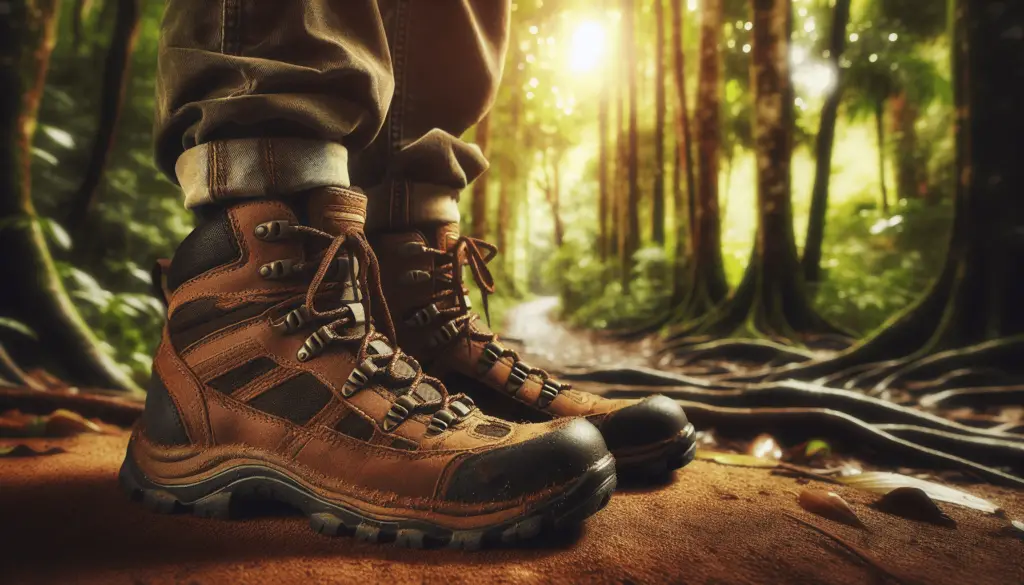Are you prepared for any survival situation?
Being physically fit is just as important as having food and water stored in your bug-out bag. In a survival situation, you may need to walk long distances, carry heavy loads, or perform physically demanding tasks. This article will provide you with a comprehensive fitness plan specifically designed for preppers to help you stay in shape and increase your chances of survival.
Importance of Physical Fitness for Preppers
As a prepper, you already know the importance of being prepared for any situation. However, physical fitness is often overlooked in prepping discussions. Having a strong and healthy body can make all the difference when facing a survival scenario.
Benefits of Being Physically Fit for Survival
When you are in a survival situation, you may need to hike through rugged terrain, build shelter, or defend yourself against threats. Being physically fit can give you the strength, endurance, and agility needed to handle these challenges with ease. Additionally, staying in shape can improve your overall health and mental well-being, which are vital during times of crisis.
Assessing Your Current Fitness Level
Before starting any fitness regimen, it is important to assess your current level of physical fitness. This will help you determine where you are starting from and set realistic goals for improvement. Below is a simple fitness assessment that you can use to evaluate your current fitness level:
Fitness Assessment Sheet
| Exercise | Repetitions | Time (in seconds) | Notes |
|---|---|---|---|
| Push-ups | |||
| Sit-ups | |||
| Squats | |||
| 1-mile run | |||
| Plank |
Interpreting Your Fitness Assessment
- Push-ups: This exercise measures upper body strength.
- Sit-ups: This exercise measures core strength.
- Squats: This exercise measures lower body strength.
- 1-mile run: This exercise measures cardiovascular endurance.
- Plank: This exercise measures core stability.

Setting Realistic Fitness Goals
Based on your fitness assessment, you can set specific and achievable fitness goals that align with your prepping needs. Whether you need to improve your endurance, strength, or flexibility, having clear objectives will help you stay motivated and track your progress over time.
The Prepper’s Fitness Plan
Now that you have assessed your current fitness level and set realistic goals, it’s time to create a customized fitness plan for prepping. This plan will incorporate a mix of cardiovascular exercise, strength training, and flexibility training to ensure that you are well-rounded and prepared for any survival scenario.
Cardiovascular Exercise
Cardiovascular exercise is essential for building endurance, improving heart health, and burning calories. In a survival situation, you may need to walk long distances or run to safety, making cardiovascular fitness crucial for preppers. Here are some cardio exercises you can incorporate into your fitness plan:
- Running or jogging
- Hiking
- Cycling
- Swimming
- Jumping rope
Strength Training
Strength training is important for building muscle mass, increasing strength, and preventing injuries. In a survival scenario, you may need to lift heavy objects, chop wood, or climb obstacles, all of which require strength and power. Here are some strength training exercises you can include in your prepper’s fitness plan:
- Push-ups
- Pull-ups
- Squats
- Lunges
- Deadlifts
Flexibility Training
Flexibility is often overlooked but plays a crucial role in preventing injuries, improving range of motion, and enhancing overall performance. In a survival situation, being able to move freely and efficiently can make a significant difference. Here are some flexibility exercises you can add to your fitness regimen:
- Yoga
- Stretching
- Pilates
- Foam rolling
- Mobility drills
Sample Prepper’s Fitness Routine
To help you get started, here is a sample prepper’s fitness routine that incorporates cardiovascular exercise, strength training, and flexibility training. Feel free to modify the workout based on your fitness level and goals.

Sample Workout Plan
| Exercise | Sets | Reps/Time | Notes |
|---|---|---|---|
| 1-mile run | 1 | Warm-up | |
| Push-ups | 3 | 15 | |
| Squats | 3 | 20 | |
| Plank | 3 | 1 minute | |
| Hiking | 1 | 2 hours | Cardiovascular exercise |
| Yoga | 1 | 30 minutes | Flexibility training |
Tips for Success
- Start slow and gradually increase the intensity of your workouts.
- Stay consistent with your fitness routine to see progress.
- Listen to your body and rest when needed to prevent injuries.
- Stay hydrated and fuel your body with nutritious foods.
- Don’t forget to track your progress and celebrate your achievements along the way.
Nutrition Tips for Preppers
In addition to staying physically fit, it is important to fuel your body with the right nutrients to support your fitness goals and overall well-being. Here are some nutrition tips specifically tailored for preppers:
Balanced Diet
Eating a balanced diet that includes a variety of fruits, vegetables, lean proteins, whole grains, and healthy fats will provide your body with the necessary nutrients for optimal performance. Aim to include a rainbow of colors on your plate to ensure you are getting a wide range of vitamins and minerals.
Hydration
Staying hydrated is crucial for maintaining energy levels, regulating body temperature, and supporting muscle function. In a survival situation, access to clean water may be limited, so it’s important to store an adequate supply or invest in water purification methods.
Protein Intake
Protein is essential for muscle repair and growth, making it an important component of a prepper’s diet. Include sources of protein such as lean meats, poultry, fish, eggs, dairy, legumes, and nuts in your meals to support your fitness goals.
Meal Planning
Planning and preparing meals in advance can help you stay on track with your nutrition goals and avoid unhealthy choices in times of stress. Consider batch cooking, meal prepping, or stocking your pantry with non-perishable items that provide a good balance of nutrients.
Mental Fitness for Preppers
In addition to physical fitness and nutrition, mental fitness is equally important for preppers facing survival situations. Your mental resilience, adaptability, and problem-solving skills can make a significant impact on your ability to survive and thrive in challenging conditions. Here are some strategies to improve your mental fitness:
Stress Management
Learning how to manage stress effectively can help you stay calm, focused, and make better decisions in high-pressure situations. Practice relaxation techniques, mindfulness, deep breathing exercises, or meditation to reduce stress and improve mental clarity.
Mental Resilience
Developing mental toughness and resilience is essential for overcoming obstacles, setbacks, and adversity. Cultivate a positive mindset, practice gratitude, build a support network, and learn from failures to strengthen your mental resilience and adaptability.
Problem-Solving Skills
Having strong problem-solving skills can help you think critically, make quick decisions, and find creative solutions in survival scenarios. Practice situational awareness, strategic thinking, and scenario planning to enhance your problem-solving abilities and increase your chances of survival.
Conclusion
Staying in shape for survival is not just about physical exercise but also about mental resilience, nutrition, and preparedness. By following a comprehensive fitness plan tailored for preppers, you can improve your chances of surviving and thriving in any survival scenario. Remember to assess your current fitness level, set realistic goals, and stay consistent with your workouts to achieve optimal results. Stay prepared, stay fit, and stay safe!
